We list the best hotels in Rome as recommended by travel experts from CNN, Lonely Planet, Frommer’s, Fodor’s, New York Times and more. All hotel recommendations have been referenced with customer reviews and we only listed places with at least a 4 out of 5-star customer review rating.
Best cheap hotel in Rome: Hotel Virgilio
Best boutique hotel in Rome: Chapter Roma
Best luxury hotel in Rome: Hotel de Russie
Best hostel in Rome: Generator Hostel Rome
Best eco-friendly hotel in Rome: Hotel Indigo



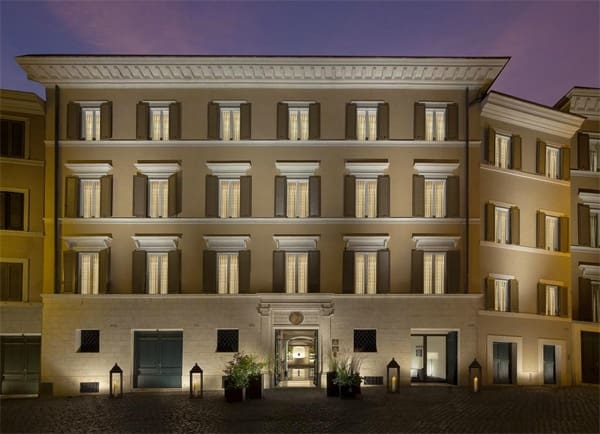
“Built in the 15th century, this beautifully renovated palazzo offers a collection of apartment-style suites perfect for large families and groups. Each minimalist-modern apartment offers large bedrooms, sprawling living spaces and sleek kitchens equipped with designer Alessi appliances.”
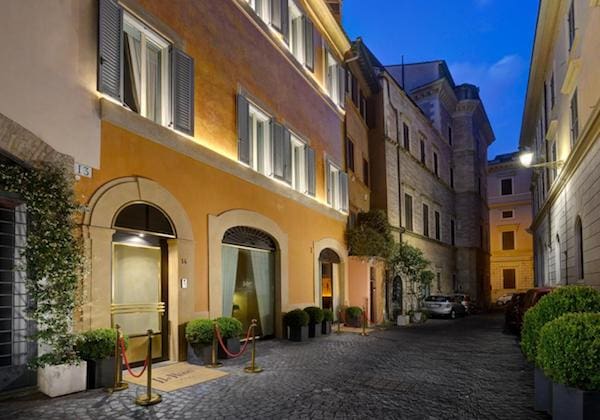
“Old school lushes and anyone who enjoys a tipple will love Hotel De’ Ricci. This is a place that’s all about the wine, with eight seriously smart rooms. You get the feeling you’re somewhere swanky the moment you walk in, all secluded booths, low lighting, and draped curtains.”
Featured in CN Traveler’s 2018 Hot List

“The quiet, confident arrival of the Vilòn gave Rome a boutique hotel to showcase the city’s sharp sophistication, which too often gets lost among its antiquities. The Vilòn stylishly captures a vital facet of the direction the city is headed in.”
Featured in CN Traveler’s Best New Hotels of 2019.
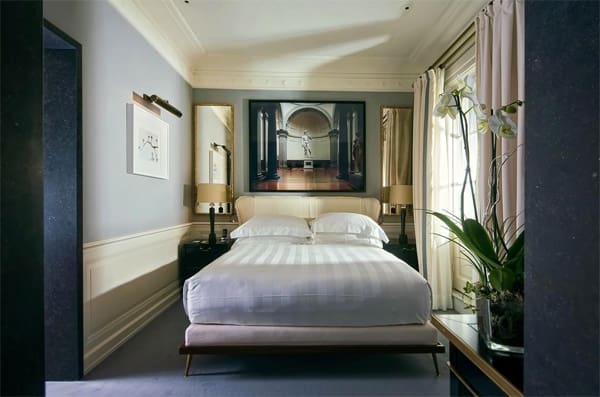
“Midcentury furniture mingles with marble sculptures at the J.K. Place Roma, a 30-room hotel that opened in 2013. The eye-catching design by the architect Michele Bönan features colorful palettes, stately four-poster beds and common spaces adorned with Berber rugs and a futuristic chandelier.”
Featured in New York Times’ 36 Hours in Rome.

“In the Eternal City, where a new five-star hotel has cropped up seemingly daily in recent years, the property is something truly singular: a spectacularly refurbished, early 18th century palazzo, awash with newly restored, pastel-hued frescoes, showstopping artworks, and centuries-old antiques–offering palatially proportioned rooms fit for royalty, smack in the heart of the buzzing historic center.”
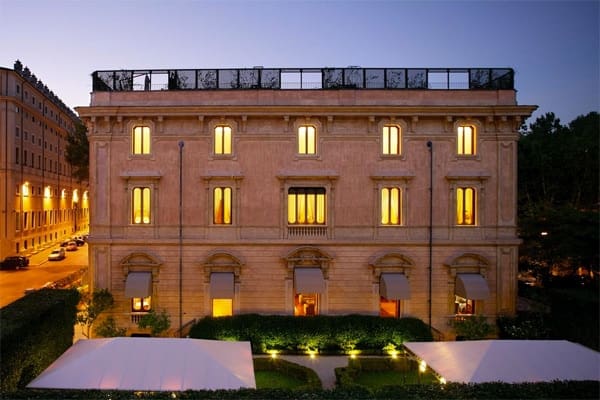
“This glorious boutique hotel resides in a mansion fitted out with 16th-century tapestries, antique books and original period furnishings. Its 14 romantic suites are elegantly decorated, with lovely green garden views.”
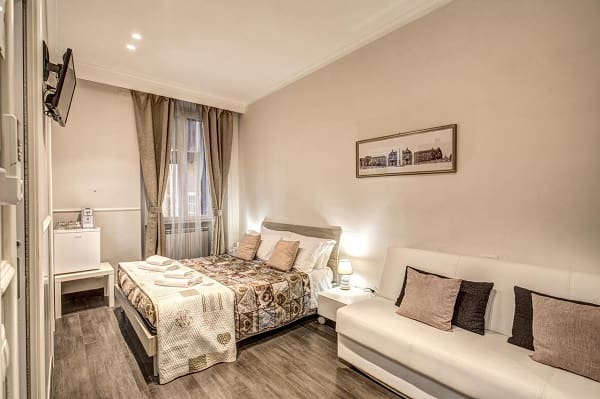
“This family-run guest house is a short walk from Piazza del Popolo. Brunetti Suite has seven rooms on two floors — the double rooms aren’t huge, but they’re big enough and well appointed.”
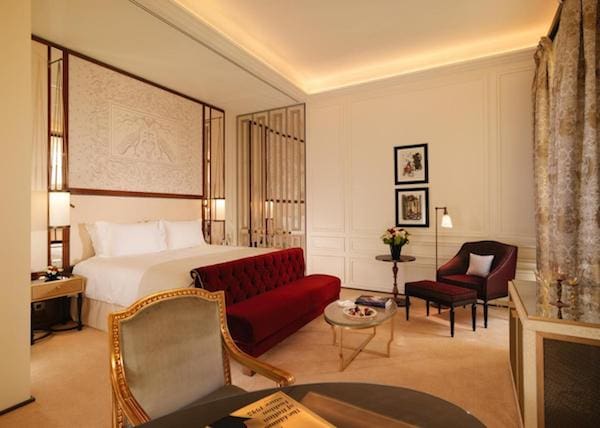
“It is elegant and calm, with marble floors, a gold-lit ceiling and vases of freshly-picked flowers in every corner. Everything is flawless, but it’s the staff that truly stand out, taking care of guests’ every need, from tour bookings to dinner reservations.”
Featured in CN Traveler’s 2018 Hot List
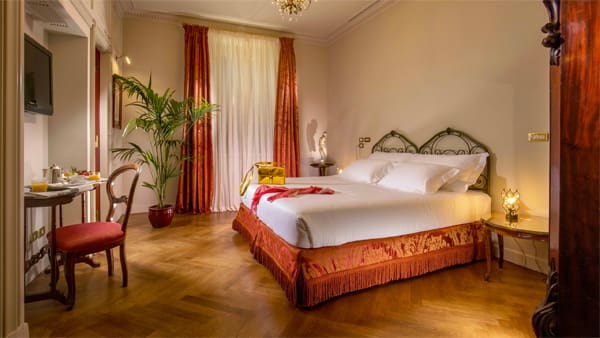
“The Hotel Locarno, with generous high-ceilinged rooms, a fabulous bar and a lovely courtyard, is an oasis of class and tranquillity a stone’s throw from Piazza del Popolo.”
Featured in New York Times’ 36 Hours in Rome.
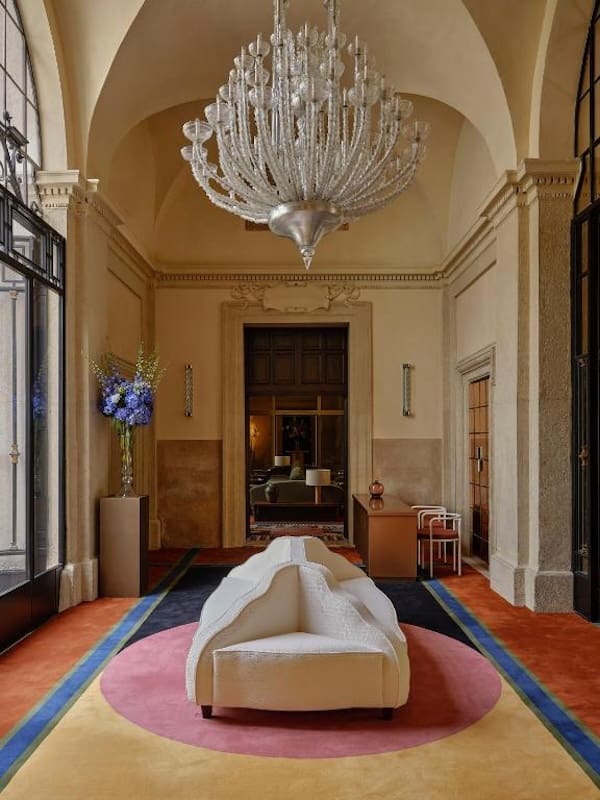
“The hotel’s buzz is due to its provocative mix of old and new. The fresco-filled palazzo, built initially for a fabulously wealthy papal secretary, has long been renowned in Rome as home to the Colegio Nazareno, the oldest teaching institution in the city.”
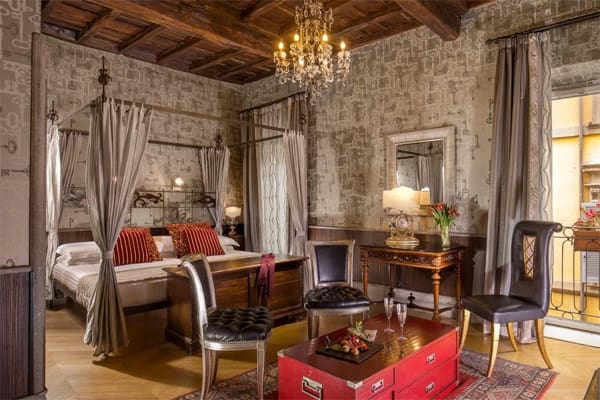
“The name doesn’t lie. This small hotel is tucked down a medieval lane, on the edge of Monti and with the forums of several Roman emperors as neighbors. Its midsized rooms are sumptuously decorated.”
Featured as Frommer’s Exceptional Choice in Rome.

“The best thing about this hotel is its private rooftop terrace, with a 360-degree city view so good that people sit up there even on cold winter evenings. This homey, four-star pad has comfortable baroque-style rooms with expensive drapes, wooden beams and sparkling chandeliers.”
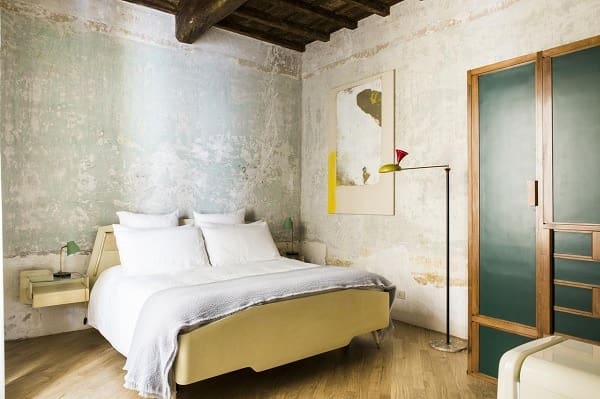
“Like a Fellini film, the G-Rough deftly balances the refined and the rugged, creating a sophisticated hotel with both a sense of place and a sense of style.”
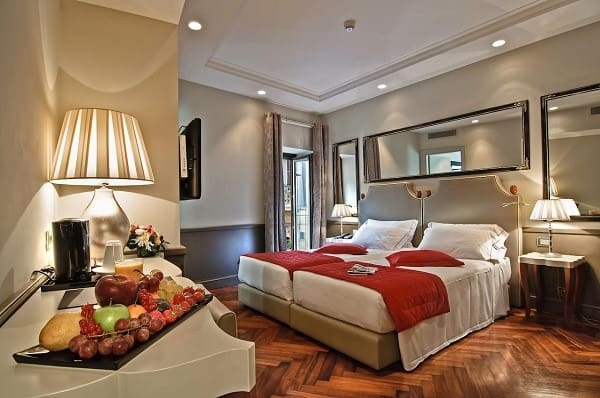
“This four-star hotel near Campo de’ Fiori will wow you with its ultra-modern black-and-white marble interiors and 30 recently refurbished rooms, but it’s a surprise in the basement that’ll have you posting on Facebook — the original Roman-era walls of the Theater of Pompey.”
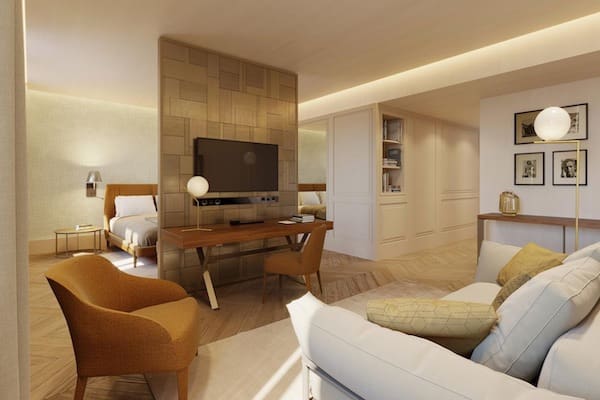
“Across the piazza on a quaintly picturesque street, the year-and-a-half old Margutta 19 offers 16 plush, modern rooms and suites surrounding a terraced green hillside.”
Featured in New York Times’ 36 Hours in Rome.

“The 120-room hotel just off Piazza del Popolo mixes Art Deco–tinged nods to Rome’s classical past with jazzy homages to Picasso and ballet legend Nijinsky, who stayed here in its previous incarnation.”
Featured in CN Traveler’s 2020 Gold List.
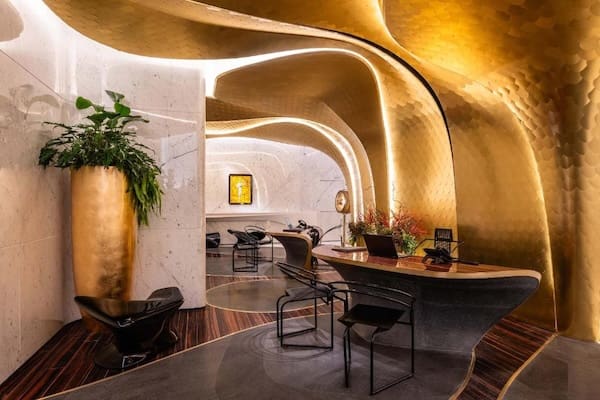
“When you step into Romeo Roma, you will immediately find yourself in a truly unique place. That’s partly thanks to Zaha Hadid—there’s Carrara marble honed into bold curves, Makassar ebony, and a design reminiscent of a spaceship from the future.”
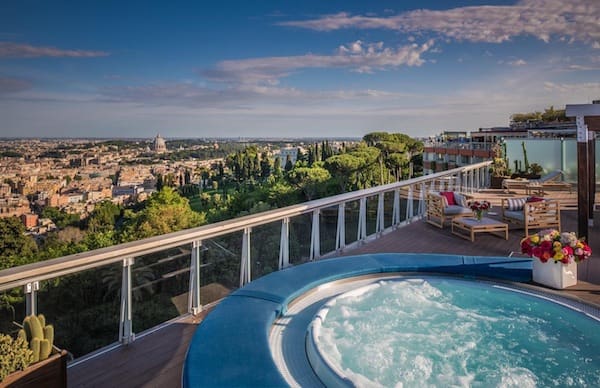
“Arriving at the Cavalieri feels a bit like stepping into Rome’s bygone era, a time of endless manicured gardens, cheery butlers, and azure swimming pools where cocktails can be taken at any time of the day, darling.”
Featured in CN Traveler’s Gold List in 2020.
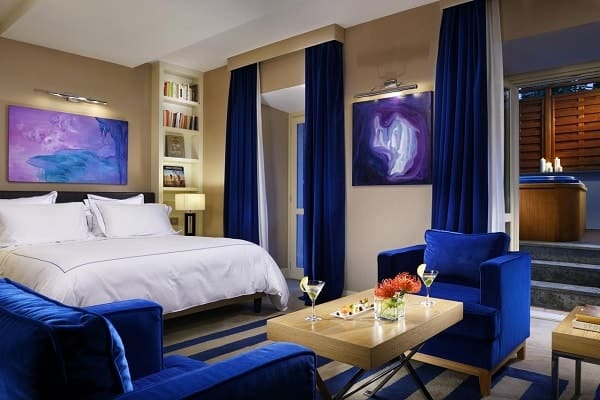
“This super-chic, five-star art hotel just around the corner from Piazza del Popolo attracts well-heeled guests who want a base in the heart of Rome’s shopping district. The First offers one of Rome’s best views: roof-top tiles, domes and bell towers.”
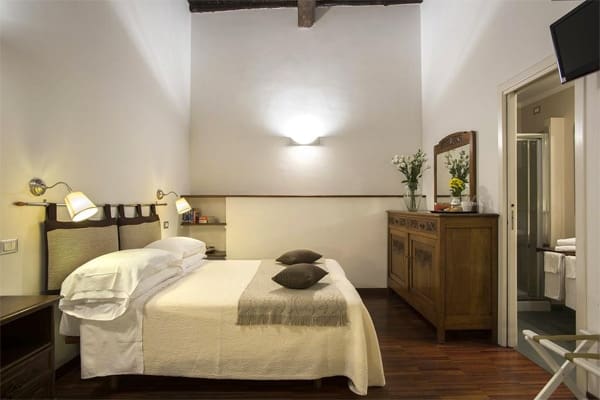
“Perfectly placed on a peaceful cobbled lane in the ‘quiet side’ of Trastevere, this ground-floor guesthouse sports six gleaming white rooms with parquet floors, a modern low-key look and well-equipped bathrooms.”

“In a 17th-century palazzo in the historic center, D. O. M is a luxurious hotel with 24 rooms and suites that opened in late 2013. The richly textured décor is an appealing mix of old and new — think artworks ranging from Renaissance-era marble inscriptions to Andy Warhol silk-screens — and the clubby rooftop terrace is a new hot spot for aperitivi in warmer months.”
Featured in New York Times’ 36 Hours in Rome.
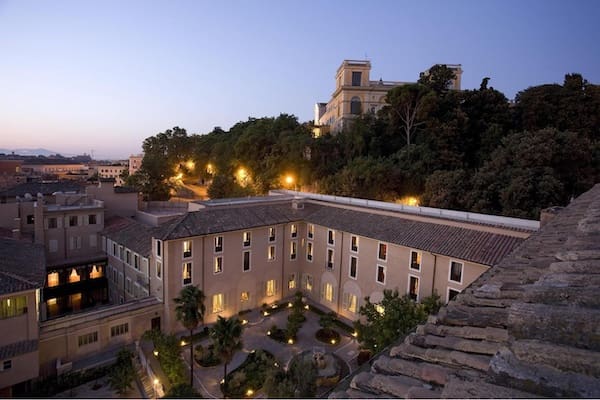
“Donna Camilla Savelli, in a quiet corner of Trastevere, has 78 rooms housed in a Baroque monastery with a grand staircase, courtyard garden and lots of Old World charm.”
Featured in New York Times’ 36 Hours in Rome.
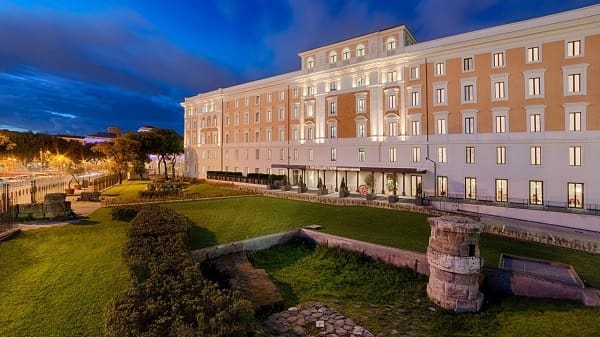
“Travelers arriving by train will appreciate the hotel’s quiet, easily accessed location. And those who have seen and done Rome’s main sights may appreciate its proximity to lesser-known ones.”
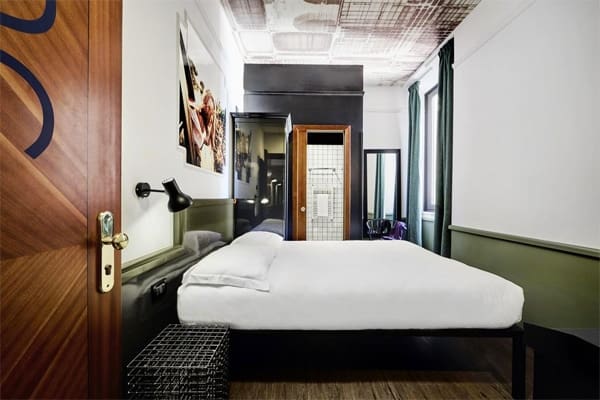
“Hostelling just got a whole lot smarter in Rome thanks to this designer hostel which, quite frankly, is more uber-cool hotel in mood – 72% of the 174 beds here languish in bright white private rooms with sharp bathrooms, and dorms max out at four beds.”
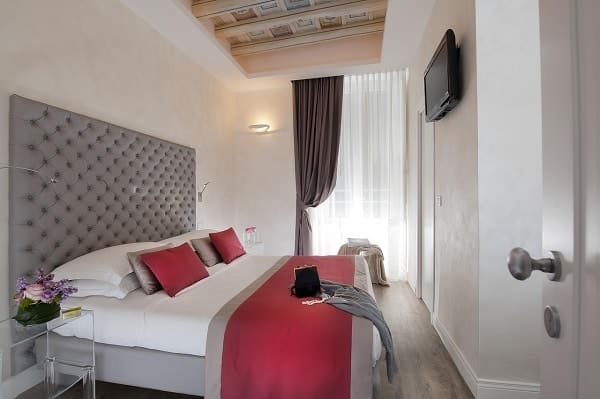
“Location is really the key to this unpretentious establishment. The hotel is within easy walking distance of Campo de’ Fiori and the Pantheon and Hotel Navona is on one of the quieter streets.”

“Rome’s premier party hostel is ideal for travellers in their 20s looking for a comfortable bed and an interactive social scene. It has creative and artsy vibe, and a rooftop terrace and small garden hang-out for film screenings during the summer months.”

“W Rome, near Villa Borghese Park, has 162 rooms in two 19th-century palazzi. It offers marble bathrooms, velvet curtains and a skylit lounge.”
Featured in New York Times’ 36 Hours in Rome.
Recommended by:
CNN, Telegraph
Recommended by:
CN Traveler, Telegraph
Recommended by:
CN Traveler, Telegraph
Recommended by:
New York Times, Forbes, Telegraph
Recommended by:
CN Traveler, Telegraph
Recommended by:
Lonely Planet, Frommers, Forbes, Telegraph
Recommended by:
CNN
Recommended by:
CN Traveler, Telegraph, Forbes
Recommended by:
New York Times, Telegraph
Recommended by:
Travel+Leisure, CN Traveler, Telegraph
Recommended by:
Frommers, Lonely Planet
Recommended by:
CNN, Telegraph
Recommended by:
New York Times, Telegraph
Recommended by:
CNN
Recommended by:
New York Times, Telegraph
Recommended by:
CN Traveler, Forbes
Recommended by:
CN Traveler, Telegraph, Wallpaper
Recommended by:
CN Traveler, Forbes
Recommended by:
CNN
Recommended by:
Lonely Planet
Recommended by:
New York Times, Telegraph
Recommended by:
New York Times, Lonely Planet
Recommended by:
New York Times, Telegraph
Recommended by:
Lonely Planet, Telegraph
Recommended by:
CNN
Recommended by:
Telegraph
Recommended by:
New York Times, CN Traveler, Fodors
The cradle of modern civilisation, it has a history of more than 3000 years, which is very much evident in present-day Rome too. It is home to some of the most iconic wonders of Christendom, the creation of Renaissance masters.
Trastevere
Its quaint cobbled streets are lined by several pubs and restaurants which are popular amongst both locals and tourists. You will find several hotels located here, catering to various budgets.
Trevi
It is a vivacious neighbourhood, making it a favourite haunt of tourists. There are street vendors selling a variety of wares, delectable food, and Italy's famous gelato. There are some top-notch restaurants here as well. A number of hotels are present overlooking the famous fountain and square.
Ostiense
There are several hipster bars and discotheques, making it a popular haunt of youngsters. The Eataly superstore houses 4 floors of restaurants, bars and other gourmet items. Some of the luxury hotels are located here.
Esquilino
It is one of the primary attractions of Rome, the site of the Church of Santa Maria Maggiore. Since it is popular with tourists from all over the world, one can come across several eateries serving global cuisine like Asian and African, as well the famous pizzerias and Italian restaurants. Many budget hotels are located here.
Castro Pretorio
This neighbourhood has undergone a massive turn around in the recent years. From nondescript accommodations, it now has boutique hotels and edgy hostels popular with backpackers. Traditional pizzerias and delis satiate the hunger of travellers as do the wonderful historic sights.
Also check out our travel guide about the best areas to stay in Rome.
If you're looking for a cheap hotel in Rome, then book Hotel Virgilio. It's an excellent budget hotel offering great value for money. It's in a good location, it's been recommended by travel experts and the hotel has excellent customer reviews. Also check out our list of the best cheap hotels in Rome.
Not a fan of big chain hotels? No problem. If you want to stay in a boutique hotel in Rome, then you should book Chapter Roma. The hotel has been rated highly by previous guests for its boutique style.
Also check out our list of the best boutique hotels in Rome, it's a manually curated list of the most unique and romantic hotels in the city.
If money isn't a problem and you're looking for a luxury hotel in Rome, then go for Hotel de Russie. The hotel offers excellent service, it's in a top location, it has been rated very highly by previous guests and renowned travel critics have recommended it. Also check out our list of the best luxury hotels in Rome, it's a manually curated list of the most exclusive 5-star hotels in the city.
If you're looking for a great hostel in Rome, then you should check out Generator Hostel Rome. The hostel has magnificent reviews by backpackers, it has been recommended by well-known travel experts and it's in a good location. Also check out our list of the best hostels in Rome.
For a 3-star hotel you have to pay around $140 per night and for a 4-star hotel you would be looking at $180 per night. If you're after a luxury 5-star Rome hotel then you can expect to pay around $480 per night.
Try Hotel Lunetta or NH Collection Palazzo Cinquecento Hotel if you're looking for a delicious breakfast at a hotel in Rome. Both hotels have excellent customer review ratings for breakfast.
Try Hotel De’ Ricci if you're looking for a romantic getaway in Rome, it has some excellent recent customer reviews by couples.
Vatican Museums & Sistine Chapel Skip-the-Ticket-Line Entry. See priceless works of art from the Papal collections in the Vatican Museums and Sistine Chapel. Marvel at masterpieces from antiquity to Michelangelo’s legendary frescoes. Enjoy optional acces to the Papal Villas and Vatican Gardens. Price: $23.
Colosseum Underground Guided Tour with Palatine Hill & Roman Forum Access. On this Colosseum underground tour, you can experience this historic Rome icon to the fullest with access to areas that are typically closed to the public—the underground chambers. Price: $95.
Reserved Entrance: Saint Peter Basilica Self-Guided Tour. Choose your preferred time and skip the long lines to enter St. Peter’s Basilica. Save up to 1 hour with this dedicated access. Use your own mobile phone, download an audio guide, and marvel at art by Michelangelo and more. Price: $23.
More things to do in Rome
The eternal city has been a source of inspiration for artists, writers and travelers for millennia, thanks to its many wonders. Rome is full of places that will capture your imagination and leave you spellbound with their beauty. The city has so many historical monuments, churches, palaces, and other sites that it’s almost impossible to see them all in just a few days. However, the good news is that there are some sights that are so impressive and important that they must be seen by any visitor to Rome. Here’s the ultimate itinerary for a perfect Rome experience.
The Colosseum
The Colosseum, one of the greatest and most famous amphitheaters in the world, is a must-see for any visitor to Rome. Construction of this iconic building began in AD 72 under the rule of emperor Vespasian, and it was completed during the reign of his son, Titus. It was used for gladiatorial contests and public spectacles for almost 500 years, until emperor Honorius declared it off limits in the fifth century. It’s estimated that as many as 80,000 spectators could fit into the arena during the games. After many centuries of harsh weather conditions and looting, a significant part of the Colosseum was lost forever. However, what still remains is enough to evoke wonder and amazement. Visiting the Colosseum is definitely a must-do activity during your stay in Rome.
Renaissance Rome
Rome’s renaissance is perhaps best seen in the 15th-century buildings that are located in the city’s famous squares, such as the famous Trevi Fountain (Fuente de la Eterna Primavera). The building on the other side of the fountain, the ornate Baroque-style church, is the 17th-century church of Santa Maria della Immacolata. This church sits on the site where the Temple of Jupiter was once located. In the 16th century, Pope Sixtus V built the beautiful baroque church of Santa Maria del Popolo, behind the Santa Maria della Immacolata and next to one of the main roads leading towards the walls of the city. This church was built on the site of a temple dedicated to the god of war, Mars.
St. Peter’s Basilica
The impressive St. Peter’s Basilica is the largest church in the world. It was built on the location of the Apostle Peter’s grave, and it’s the center of the Roman Catholic Church. Construction of this magnificent basilica began in 16th century and ended in 1950 when the dome was completed. This building, housing the Papal Throne, attracts millions of visitors from around the world annually. The stunning basilica’s architecture and decoration are worth seeing, especially the beautiful mosaics on the dome and the altar. The interior decoration and the sculptures of the basilica are made by the greatest artists of their times, including Michelangelo, Bernini, and Raphael. If you go to Rome, don’t forget to visit St. Peter’s Basilica.
The Ancient Ruins of Rome
Some of the most important ancient ruins in the city include the Colosseum and the Palatine Hill (the archaeological site where the Temple of Romulus and the Temple of Apollo once stood). There’s also the Roman Forum, which is the largest archaeological site in Rome and once housed the city’s political, commercial and social activities. The Temple of Saturn can be found here; it was built around the sixth century BC but was rebuilt many times, most recently in the 16th century. Also found in the Roman Forum is the unique and striking Arch of Septimius Severus, which was built around 203 AD to commemorate the Roman emperor, his wife, and two sons.
The Vatican Museum
Visiting the Vatican Museums is a must for art lovers. The building houses the world’s largest collection of the Renaissance art and the sculptures made by famous artists, including Michelangelo, Raphael, and Bernini. There are many treasures to be seen, including some of the most famous paintings in the world, such as the Sistine Chapel and the Gallery of the Dreams.
The Sistine Chapel is the place where a young Michelangelo painted the famous ceiling. The Gallery of the Dreams is also one of Michelangelo’s masterpieces. There are many other paintings and sculptures inside the museums worth seeing, such as the famous Laocoön, the Apollo, and the Pietà. The Vatican Museums are open daily from 09:00 until 17:30, except on the last Saturday of each month when it closes at 13:30.
Pantheon
The incredible 2,000-year-old Pantheon is one of the best-preserved Roman buildings. It’s also one of the most important buildings in the world, and it’s a must-see in Rome. This amazing structure was built as a temple for all the gods of the Roman Empire, but it was converted into a Christian church in the 8th century. This ancient building has withstood the passage of time with its architecture and design largely intact. The interior of the Pantheon is impressive and awe-inspiring. Visiting the Pantheon is one of the best ways to understand how ancient Romans lived.
Roman Forum and the Capitoline Hill
The Roman Forum was the heart of the city during the empire. It’s a place where many important events took place and where the markets were held. The Temple of the Goddess of Liberty was built in the Roman Forum, and this is where Julius Caesar had his final speech before he was killed by Brutus and the other senators. Many other important buildings are still standing in the Forum, including the Temple of Concord, the Temple of Romulus, and the Curia (the Senate house). The ancient hill of the Capitoline is also located in the Forum, and it once housed the Temple of Jupiter, the supreme god of the Roman religion. Today, the Capitoline Museums are located on the hill, and they are home to one of the most important collections of art in the whole country.
Conclusion
The Eternal City is a must-visit destination for anyone who loves art and history. This amazing city has preserved many of its original monuments and attractions, making it one of the best places to visit in Europe. Visiting Rome is like traveling back in time, and you’re sure to be amazed by its beauty, culture, and history. If you’re planning a trip to the Eternal City, don’t forget to visit these city wonders. Visit them, and you’ll get a taste of the amazing culture, history and beauty of this amazing city.
We recommend that you read our guide about where to stay in Rome. It provides an excellent overview of the most popular areas, highlighting the main attractions and hotel recommendations for each area.
If you like our list of hostels, B&Bs and hotels in Rome, then you should also check out our selection of recommended hotels in Venice or the best hotels in Florence.